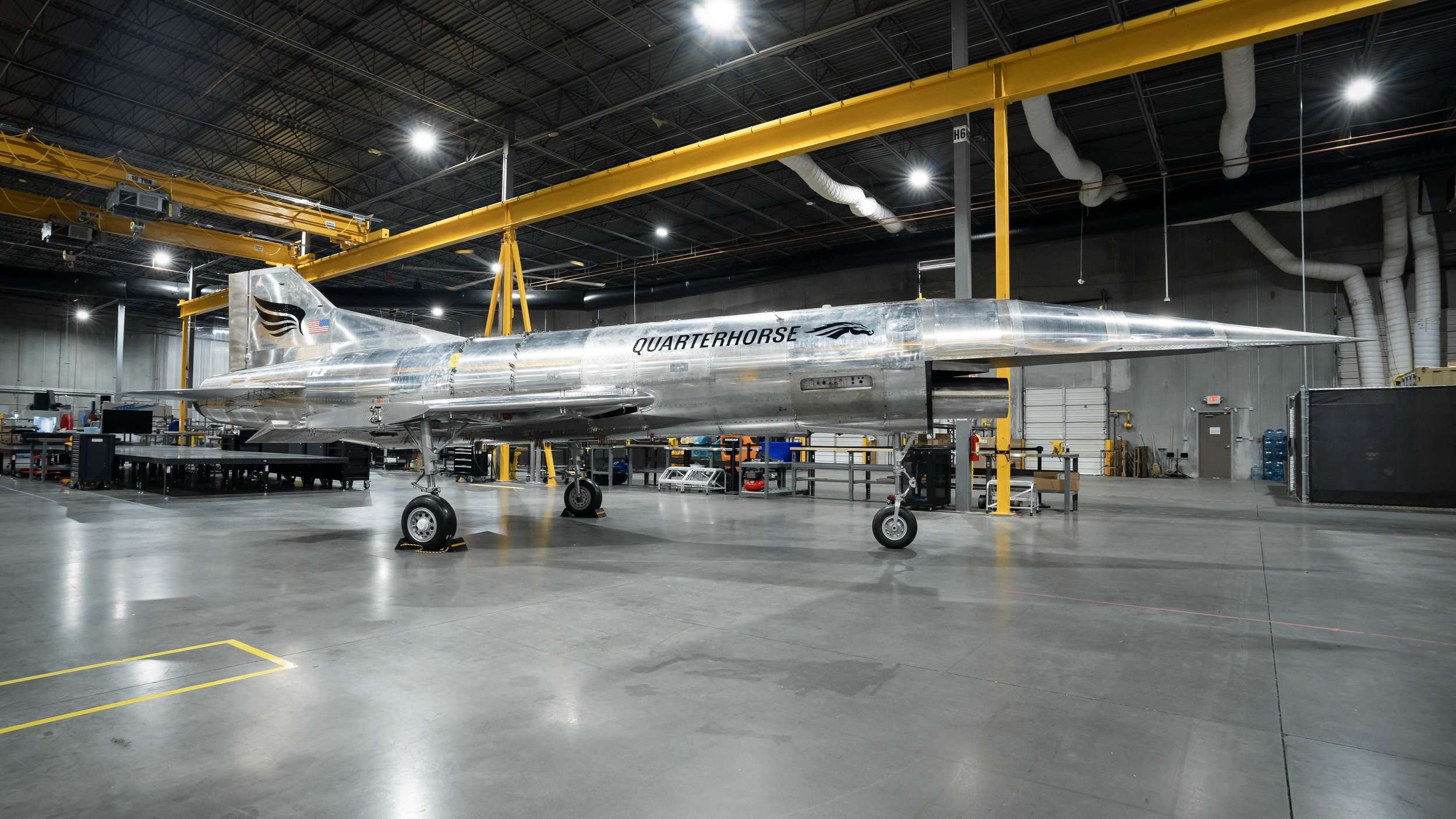
Hermeus, the company operationalizing hypersonic aircraft, has unveiled its first aircraft — Quarterhorse Mk 1 — which will take flight later this year. Designed, built, and integrated in just seven months, this is the company’s second fully-integrated vehicle in the past year, following Quarterhorse Mk 0 which completed its test campaign in November 2023. This rate of iteration represents a new standard of one aircraft per year, which the team has set for the pace of aircraft development.
Quarterhorse Mk 1 is an uncrewed, remotely piloted aircraft powered by a GE J85 engine. Its primary mission is to demonstrate high-speed takeoff and landing – a key enabling capability unique to future hypersonic aircraft on the company’s roadmap. Flight tests will take place at Edwards Air Force Base.
This milestone marks the transition from the ‘design and build’ phase to the ‘integrated test’ phase for Mk 1. The coming months will see the vehicle endure a battery of tests across its subsystems, ground station, operations, and human factors to prepare it for flight test later this year.
“Moving into the integrated test program is the culmination of a huge team effort and a significant emotional event for the entire company,” said Hermeus Vice President of Test, Don Kaderbek. “As we begin the journey to first flight, we will conduct a comprehensive evaluation of the aircraft’s performance while simultaneously examining the effectiveness of our test procedures, safety culture, and interdisciplinary team collaboration. We’re excited and humbled to conduct this testing at the legendary Edwards Air Force Base.”
Each aircraft in the Quarterhorse program progressively increases in complexity, building on the learnings of prior builds. This approach manages program risk across multiple vehicles and accelerates delivery of products and services to Hermeus customers.
“The most unique and important aspect of our approach to developing a hypersonic aircraft is our rate of iteration – designing, building, and flying an aircraft in less than a year, every year,” said Hermeus CEO and Co-Founder, AJ Piplica. “It’s a pace that hasn’t been seen in the aircraft world for half a century. This approach has been proven successful in delivering massive improvements in the capabilities of rockets, satellites, and small drones. We’re now bringing that power of iteration speed to aircraft. It’s a capability that is absolutely necessary for solving the challenges of operationalizing hypersonic aircraft.”
In addition to showcasing the aircraft, Hermeus also shared plans for the next iteration of Quarterhorse – Mk 2 – which will feature the Pratt & Whitney F100 engine and fly at supersonic speeds next year.
“For just over 50 years the F100 has powered the F-15 and F-16 with industry-leading reliability, and now it enters a new era of aviation,” said Josh Goodman, Senior Director of the F100 Program at Pratt & Whitney. “From the J58 powering the SR-71, to the F119 in the F-22 and the F135 in the F-35, Pratt & Whitney has a long history of building cutting-edge engines and that will only continue as we strengthen our partnership with Hermeus. Seeing a new aircraft flying the F100 supersonic next year will be nothing short of extraordinary.”
Hermeus’ strategic decision to transition to the more capable F100 engine for Quarterhorse Mk 2 accelerates the company’s roadmap to Darkhorse, a multi-mission hypersonic aircraft for defense and national security missions, while simultaneously delivering a compelling intermediate product, the world’s only purpose-built high-Mach drone.
“This upgrade is a huge win for getting a high-performance aircraft into the hands of customers sooner and shows the power of the fast and iterative approach at Hermeus. By breaking free of rigid, multi-year development timelines, we are enabled to build the right aircraft for this moment and get that aircraft in the air in less than a year,” commented Hermeus COO and Co-Founder, Skyler Shuford. “Mk 2 will be our 3rd sub-year aircraft system build, and while we still need to prove ourselves in flight, an enormous amount of programmatic risk is reduced by having the next airplane closely following.”

Be the first to comment